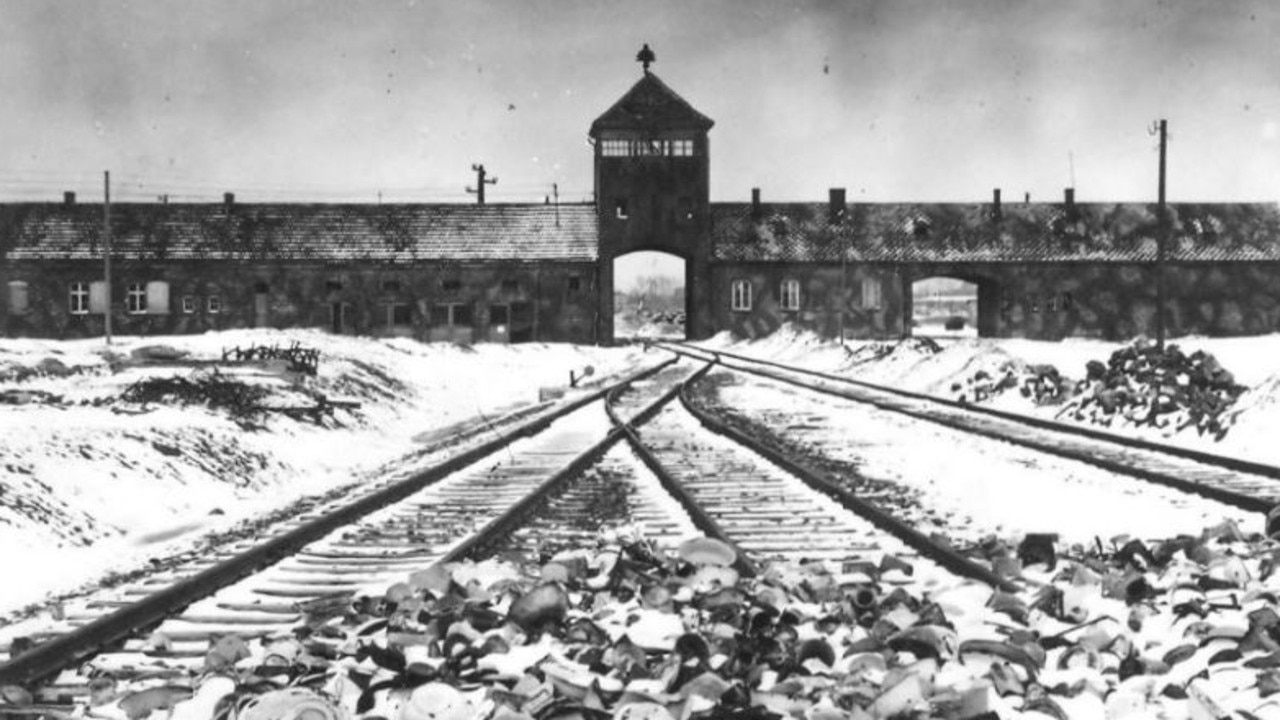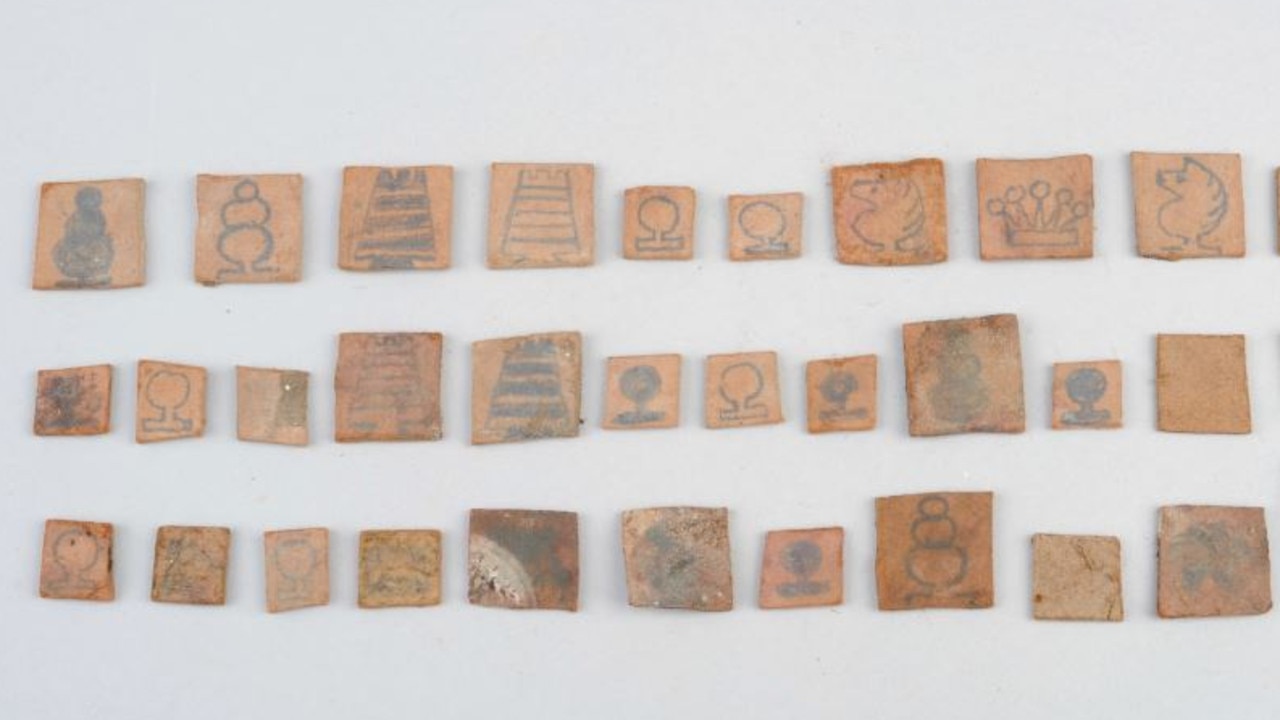Haunting new discovery under the floorboards at Auschwitz
A haunting new discovery has been unearthed under the floorboards of the notorious Auschwitz concentration camp.
An eerie new discovery has been made underneath the floorboards of one of Nazi Germany’s most notorious concentration camps.
More than 30 handmade chess pieces were uncovered at Auschwitz concentration camp in Poland inside a former prisoner block during recent renovation work.
The 35 pieces had been hidden under floorboards on the first floor of block 8 at Auschwitz I camp, presumably so that they could be hidden from Nazi guards.
The shocking discovery provides a sad insight into the daily lives of the prisoners of Auschwitz, which is known for being Europe’s most deadly concentration camp during the Holocaust.

Over 1.1 million people — including Jews, Romani, Jehovah’s Witnesses, homosexuals and people with disabilities — were murdered at the camp during World War II as part of Hitler’s terrifying ‘final solution’.
Elżbieta Cajzer, head of the Auschwitz Museum’s Collections, said that the hand-drawn chess set was remarkably in a “good state of preservation” despite being around 80 years old.
“Several drawings may be a bit blurry, but the images of rooks, pawns, bishops, and knights are still easily distinguishable,” Ms Cajzer said.
“Nevertheless, the set is incomplete, and some boxes no longer have any traces of the drawing.
“Our evaluation shows that the objects are in a good state of preservation. They will now be subjected to conservation treatment.”
Ms Cajzer also touched on the importance of prisoners being able to hide the game quickly.
“The discovered chess pieces are unique in that they were crafted from prefabricated cardboard in a relatively primitive way,” she added.

“We assume the focus was not on the aesthetic qualities but on functionality, easy portability, and quick concealment.”
Auschwitz was first established in April 1940 as a place to hold Polish prisoners during Nazi Germany’s invasion of the country.
By the time the camp was liberated in 1945, it had evolved into one of history’s largest killing machines.
Prisoners were beaten, tortured and executed for the most trivial of reasons. If the chess pieces were discovered, it is not unreasonable to assume the very worst of punishments could have transpired.
The first gassings took place in block 11 of Auschwitz I around August 1941 with Soviet and Polish prisoners. The construction of Auschwitz II began the following month, and from 1942 until late 1944, people from all over German-occupied Europe arrived in fright trains.


Many went straight to the gas chambers. Of the 1.3 million people sent to Auschwitz, 1.1 million were murdered.
The victims who were not gassed were killed through the sheer horrors of the camp: starvation, exhaustion, disease, individual executions, or beatings. Many others died during cruel medical experiments.
Auschwitz Museum’s Magdalena Urbaniak said that prisoners tended to spend their free time playing games in a bid to escape the harsh realities of the camp.
“Chess and cards were popular games people could make themselves using illegally acquired pieces of cardboard or wood,” she explained.
“Camp prisoners treated mental activities as a respite from the brutal camp reality. The necessary items for the game were most often produced illegally by prisoners.
“Wood, paper, and less frequently, other available materials, such as breadcrumbs, served as material.

“Some of the gaming paraphernalia illegally made its way to the camp’s prisoners from luggage confiscated from Jewish victims.”
One survivor, Jan Dziopek, worked as a warehouseman at Auschwitz’s carpenter shop and he often crafted chess pieces.
“I had a lot of orders, even from SS men. However, I was reluctant to fulfil them,” he said.
“Nonetheless, I had to fulfil their orders because, under the guise of working for them, I could fulfil the requests of my colleagues, who paid me with rations of bread or camp soup.
“My colleagues from kitchens and various warehouses purchased these items from me, as they had no difficulty obtaining food.
“I won’t go into detail about the number of times and how many lashes I received for this.
“As I could not tinker in the warehouse for fear of getting caught, I created a secret hide-out in the attic and transferred all the required tools from the warehouse.
“I tinkered there for hours.”
The discovered chess pieces will be shown in an upcoming exhibition focused on the daily lives of prisoners in concentration camps.






